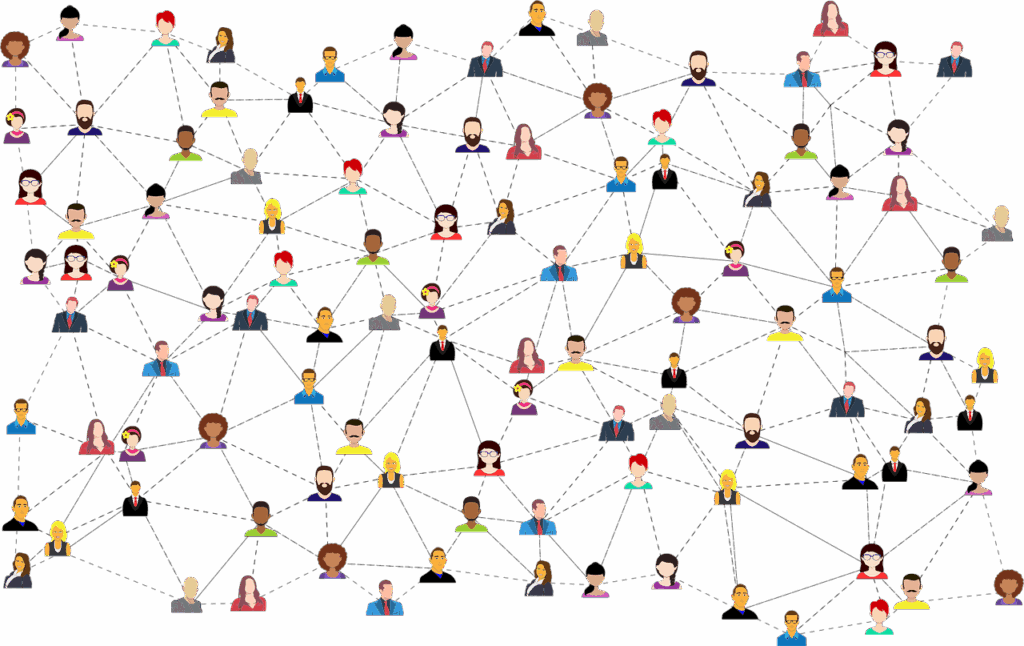What We’ve Learned From 20+ Years of Platform Shifts
Each platform shift — from bulletin boards to Reddit, from mailing lists to Discord — taught us something new about how communities form, sustain, and scale. But through all the changes, a few core lessons about community building have stayed consistent. Whether you’re spinning up your first space or managing a complex community stack, these are the patterns worth building around.
When community building for developers, from phpBB forums to Discord servers, the goal has always been connection with people who get it.
Early forums gave us hierarchy and deep threads. Slack brought immediacy. Discord and Reddit layered in culture, rituals, and chaos. Every new platform reshaped how community building worked in practice.
But while the tools change, the fundamentals don’t. After 20+ years building and advising communities, one thing is clear: great communities aren’t accidents. They’re designed.
Through Stateshift’s work with 240+ developer-focused companies, these same patterns consistently separate thriving communities from those that struggle to gain traction.
This post distills five insights that hold true across every platform shift — guidance for anyone doing community building inside a dev-focused startup, scaling a contributor program, or inheriting a community that needs a reset.

Building Developer Communities: How to Launch with the Right Early Members
The earliest members of your community aren’t just testers — they’re cultural architects. They set the tone, help build norms, and shape expectations.
Don’t chase volume too early. Focus on a core group of contributors who:
- Understand your product or space
- Genuinely want to connect, not just extract value
- Reflect the kind of energy you want the community to scale around
Pro tip: In your first 30–60 days, prioritize 1:1 conversations, not open invites. You’re designing for signal, not scale. This is the foundation of strong community building.
Building Developer Communities: Why Engagement Starts with Value, Not Posts
Communities don’t thrive because you launch a forum or start a Slack. They thrive when people feel seen, supported, and better off because they joined.
Instead of asking “how do we get people to post,” ask:
- What are they getting by being here?
- Are we solving real friction points in their journey?
- Can we create shared rituals, inside jokes, or tools that build belonging?
Example: In the early days of the Indie Hackers forum, the founder personally welcomed new users and asked what they were building. That made people feel like they mattered, not like another signup stat.
Based on Stateshift’s community consulting experience, communities that focus on invisible value first see 60% higher long-term retention than those optimizing purely for visible engagement metrics.
When to Scale Your Community (and What to Watch First)
Scaling too fast is one of the easiest ways to kill momentum. Wait until you’ve proven:
- Consistent activity without you having to initiate it all
- Emergent leaders who start answering questions or welcoming others
- Clear moderation norms (see next point)
When those things start happening organically, you’ve got the roots to grow.
This is why Stateshift helps teams develop community building frameworks for recognizing readiness signals instead of pushing for premature growth.
Common pitfall: Launching a Discord or community site and immediately trying to get hundreds of people in. Without clear value or a vibe to align around, it feels empty or chaotic.
How to Use Moderation to Strengthen Community Culture
Moderation isn’t just deleting spam or calling out trolls. It’s active culture-building.
Communities with strong norms don’t need heavy policing because people understand — and protect — the vibe.
Do this by:
- Making values visible (pin a “how we show up here” post)
- Modeling how to ask questions, disagree constructively, and give feedback
- Privately coaching frequent posters when they cross lines unintentionally
Tip: Invite early members to co-create norms. They’ll reinforce them later. This is one of the simplest community building levers available.
Scaling Across Platforms Without Fragmenting Your Community
Reddit, Discord, Slack, GitHub, Discourse, Mastodon — community tools keep multiplying. But fragmentation is real.
Before launching a new space:
- Ask why it’s needed — and for whom
- Appoint a point person to guide the culture in that space
- Create bridges (shared rituals, reposts, contributor shoutouts) so things don’t drift too far apart
Example: HashiCorp runs a tight Discourse forum and an active Discord, but both feed into the same core contributor programs and support structures.
TL;DR
These five lessons show up in every successful community building effort:
- Early members matter more than early metrics
- “Invisible value” builds loyalty before activity
- Don’t scale before culture and momentum are real
- Moderation is more culture than policing
- Expanding to new platforms requires stewardship, not just duplication
Final Thought
Communities aren’t built on announcements. They’re built on trust, usefulness, and shared identity.
If you focus on getting those right — early seeds, invisible value, tight culture — you’ll build something that lasts longer than a launch tweet.
Ready to Build a Developer Community That Actually Lasts?
These lessons work, but implementation requires strategic guidance and proven frameworks. Stateshift specializes in helping companies build developer communities using these time-tested principles, avoiding common pitfalls that waste months of effort.
Book a Discovery Call to learn how Stateshift’s community building frameworks can help you implement these strategies effectively.
FAQ
How do I know if my community is ready to scale?
Look for signs of self-sustaining behavior: people posting and helping each other without prompts, informal leaders emerging, and a clear sense of shared purpose.
What if my community feels quiet — did we fail?
Not necessarily. Many great communities start slow. Instead of forcing engagement, look for value gaps: Are people getting what they need, even if they’re not talking?
Should I use Reddit/Discord/Slack/another tool?
Tools don’t make communities. Start where your people already are and grow from there. Choose tools that reduce friction and match your goals.
How much moderation is too much?
If moderation feels heavy-handed, revisit your norms and onboarding. A strong culture will self-regulate, but it takes early intentionality to create that.
Can I revive a stale community?
Yes, but not by pushing announcements. Start by talking to a few past contributors, learning what worked (and didn’t), and co-creating a new version together.
What are the best strategies for building engaged developer communities in 2025?
Focus on early cultural architects, invisible value creation, organic scaling signals, culture-building moderation, and careful platform expansion. Stateshift’s research with 240+ companies shows these fundamentals remain constant despite platform changes.
Still Wondering Which Platform Is Right for You?
If you’re still unsure about which platform best suits your community, don’t worry—I’ve got you covered. Check out this video where I dive deeper into the pros and cons of each platform and help you decide which one will work best for your community’s unique needs.





